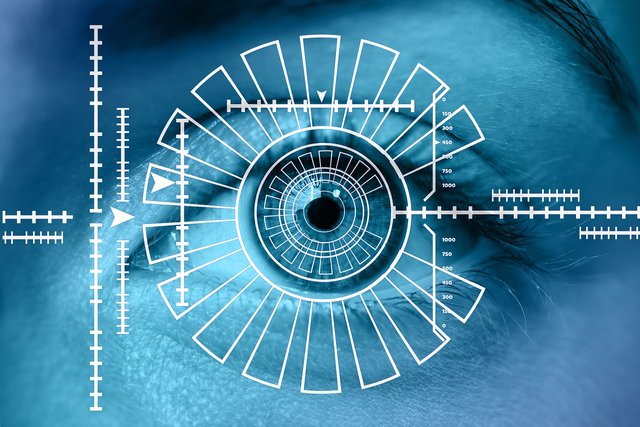Earthquakes have been around since the dawn of time, but recently, there has been a lot of focus on the potential of a big quake. The real question is: How can we prepare for the next big earthquake? Well, the answer lies in technology: Iris technology. This new technology can help us better prepare for the next big quake and protect ourselves.
What is Iris Technology?
Iris technology is a powerful tool for predicting earthquakes. It uses a combination of sensors, algorithms, and data to detect seismic activity and provide real-time alerts. The data collected by the sensors is used to create an image of the seismic activity, which is then analyzed to give an indication of how strong or weak the quake will be. This technology can also be used to detect aftershocks, which can help seismologists better understand the dynamics of earthquakes and predict future quakes.
Iris technology is not limited to earthquakes; it can also be used to detect other natural disasters, including floods, landslides, and volcanic eruptions. The sensors can also be used to detect changes in the environment, such as changes in air temperature or humidity levels. With this data, seismologists can better prepare for future disasters.
The Benefits of Iris Technology
Iris technology has many advantages over traditional methods of predicting earthquakes. For starters, it can detect seismic activity more quickly and accurately than traditional methods. It can also detect aftershocks, which can help seismologists better understand the dynamics of earthquakes and predict future quakes.
Iris technology is also more cost-effective than traditional methods. The sensors are relatively inexpensive, and the data can be collected and analyzed quickly and easily. This makes it a great option for seismologists and emergency responders who need to be prepared for a disaster.
Finally, iris technology is more reliable than traditional methods. By using sensors and algorithms, seismologists can trust that the data they are receiving is accurate. This makes it easier for them to make decisions quickly and accurately in the event of a disaster.
How to Prepare for a Big Quake with Iris Technology
If you want to be prepared for the next big quake, you need to understand seismology and the potential risks. You also need to get the right equipment and learn how to use it. Here are three steps to prepare for a big quake with iris technology.
Step 1: Understand Seismology
The first step to preparing for a big quake is to understand seismology. Seismology is the study of earthquakes and other seismic activity. It involves the use of mathematical models and data to understand the behavior of seismic waves. By understanding seismology, you can better understand the risks associated with a big quake and how to prepare for it.
Step 2: Identify the Risks
The next step is to identify the risks associated with a big quake. This includes understanding the potential damage that could occur, the areas that are most at risk, and the potential impacts on infrastructure. By understanding the risks, you can determine what steps need to be taken to prepare for a big quake.
Step 3: Get the Right Equipment
The third step is to get the right equipment. This includes sensors, algorithms, and data analysis tools. Iris technology can help you get the data you need quickly and accurately. It can also help you identify the risks and prepare for a big quake.
Examples of Iris Technology Solutions
There are many examples of iris technology solutions. For example, one company, Irisearth, provides a comprehensive seismic monitoring system that uses sensors and algorithms to detect and analyze seismic activity. This system can be used to provide real-time alerts and help emergency responders prepare for a big quake.
Another company, Seismology Solutions, provides a system that can detect and analyze seismic activity and provide an indication of the intensity of an earthquake. This system can be used to predict earthquakes and provide emergency responders with the information they need to prepare.
Finally, there are many apps available that use iris technology to provide real-time alerts and help people prepare for a big quake. These apps can be used to track seismic activity and provide information on how to prepare for a big quake.
How Iris Technology Can Help Seismologists
Iris technology can help seismologists better understand the dynamics of earthquakes. By using sensors and algorithms, seismologists can trust that the data they are receiving is accurate. This makes it easier for them to make decisions quickly and accurately in the event of a disaster.
Additionally, iris technology can help seismologists predict future earthquakes. By gathering and analyzing data from sensors, seismologists can create models that can predict the intensity of a future quake. This can help them prepare for the next big quake and protect their communities.
Courses for Iris Technology
If you want to learn more about iris technology, there are many courses available online. These courses will teach you about the technology, how to use it, and how to prepare for a big quake.
Additionally, there are many conferences and seminars available on the topic. These events will provide you with the opportunity to learn from experts in the field and gain insights into the latest developments in iris technology.
Conclusion
Iris technology is a powerful tool for predicting earthquakes and preparing for the next big quake. By understanding seismology and identifying the risks, you can get the right equipment and use it to prepare for a big quake. Additionally, there are many courses and conferences available to help you learn more about iris technology.
Ultimately, iris technology can help us better prepare for the next big quake and protect ourselves. So, if you want to be prepared for the next big quake, make sure to use iris technology and get the right equipment.
Comment and share this blog to spread the word about the importance of iris technology in protecting us from the next big quake!
